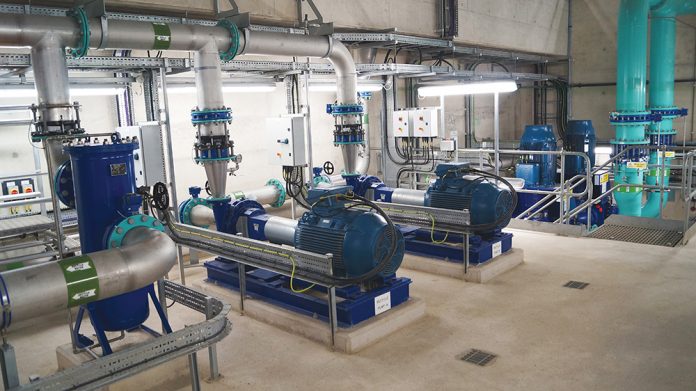WEG’s team of experienced professionals has developed a number of high-profile partnerships with water industry customers that have focussed on ‘Totex’ (total expenditure) management to support the UK’s AMP 7 industry framework. Totex is extremely topical at present, not least because it can help maintain the long-term performance and cost-effective maintenance of assets such as pumps, pumping systems and other associated control equipment and operational activities.
Totex management is a real focal point of the UK water industry as it intensifies its preparations to adopt the seventh asset management plans (AMP 7) in 2020. Many companies are now adopting the Totex model when making investment decisions to focus on reducing cost over the lifecycle of the asset, typically through technological innovation for better energy efficiency and through-life maintenance optimisation, among others. As such, water companies and their main contractors are increasingly looking to bring in reliable and established equipment manufacturers at the design stage, where their R&D capability and innovative solutions can help improve operational efficiency.
Of course, one sure-fire way to improve operational efficiency is to reduce energy consumption. Operations within the water industry are relatively intensive, requiring large amounts of energy for pumping, water treatment and waste management. Clearly, there’s potential for significant savings in this area, particularly as global energy demand is set to grow by 37% by 2040 in line with increasing global population.
A Totex approach is a business framework that considers total cost throughout the lifecycle of a project when evaluating and planning expenditure, without differentiating between operational (Opex) and capital expenditure (Capex). This framework is able to fulfil regulatory requirements, especially with regard to providing better value to consumers, the provision of efficient management for ageing infrastructure and leakage, and improvements in operational efficiency, which includes lowering energy consumption. Simply put, Totex is able to do all these by reducing cost.
The Totex approach gives a more realistic view of the asset’s value as it provides the full economic consequences of investment decisions. This factor is important as water companies require complete and accurate information from all phases of the asset’s lifecycle to be able to make useful decisions on asset management, energy efficiency and maintenance requirements at the beginning of a project. By using this model, water companies have the incentive to reduce costs across the board based on the long-term objectives of extending and enhancing asset life, which in turn will ultimately deliver better value and lower bills for customers.
A good example of Totex in action can be seen at the Littleton raw water pump station in Surrey, UK. The pump station is one of the largest extraction facilities managed by Thames Water, the UK’s largest water and wastewater company serving over 15 million customers. As part of a recent upgrade to the century-old facility, energy-efficient motors from WEG are being used to achieve expected energy savings of 5 million kWh per annum, with a corresponding annual energy cost reduction of £500,000. WEG supplied three W50 IE4 super premium efficiency motors (900 kW) as the most efficient solution for the pump drives. Operating at 96.9% efficiency, the motors are playing a key role in significantly reducing energy costs.
In France, WEG solutions are also having a major impact at Lille’s new wastewater treatment plant, where Veolia Water Solutions & Technologies turned to Atlas Copco’s ZS Premium compressors driven by WEG high-efficiency W22 electric motors and CFW11M variable speed drives adapted to customer requirements. The W22 motors offer 355 kW of power, while the modular variable speed drives are made from 400 kW power modules. When combined, variable speed drives of up to 2 MW can be achieved, which is essential to control the Lille plant’s powerful and rapidly changing flow. By using a special transformer, WEG were also able to connect 12-pulse variable speed drives, resulting in less harmonic interference and thus higher energy efficiency. This concept enables the plant to control the flow over a broad range – from 2,700 to 23,000 Nm3/h – at an excellent and relatively constant level of efficiency.
In the water industry, pumps consume a large part of the energy used by industrial electric motors. Variable speed drives are thus preferred to adjust the speed of motors for the specific application and subsequently increase energy efficiency and reduce cost. For example, when a pump is powered by a fixed speed motor, water flow is usually designed for maximum system demand, thus will be higher and so consume more energy than necessary. Therefore, where motors serve a varying process load, a VSD can automatically control the speed, or frequency as the case may be, of the power supplied to motors to match demand, so as to give efficient operation.
It is worth highlighting the fact that while the appropriate technology is clearly an enabling factor, the successful implementation of the Totex model is only assured by partnering with a reliable and established equipment manufacturer.
To discover more about ways in which WEG can help implement Totex at water companies, a white paper is available for download at
www.wegwater.com




